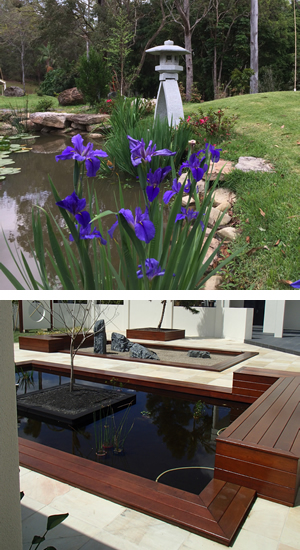
Japanese gardens are designed to bring serenity and nature into our crowded lives. The way that Japanese gardens are created is to remind us of the natural landscape.
Water has a place of choice among the components of a Japanese garden. It is a powerful expression of nature and symbolizes renewal, calm, wonder and continuity into the hereafter.
The use of bamboo for a simple water features is a popular way to add the calming trickle of water into your Japanese garden landscape. The use of an oversized planter is an artistic way to add a personal touch to your yard.
Stones are a symbol of the omnipresence of the forces of the nature, they are the anchor that connects the garden to the ground. The stones in a Japanese garden are laid out in accordance with strict rules and give it its specific personality.
Lanterns, generally constructed from stone, represent the light of knowledge, clearing away the clouds of ignorance.
Bridges are privileged sites within Japanese gardens and may be built of wood, bamboo, earth or stone. They are designed so that they always remain in harmony with the surrounding nature.
Plants are associated with moving thoughts and the universal forms of life and are shaped to the exact required for the symbolic or graphic effect desired to represent the Japanese garden in which they are located.
The flow and balance of a Japanese garden is a powerful influence that can take the mind away from the cares of the day and infuse it with a sense of peace.
FAMOUS JAPANESE GARDENS
(1) Strolling Japanese gardens…view the Kenroku-en Gardens (Click Here)
(2) Dry Japanese gardens…view the Ginkakuji Gardens (Click Here)
(3) Water feature Japanese gardens… view the Rikugien Gardens Tokyo (Click Here)
